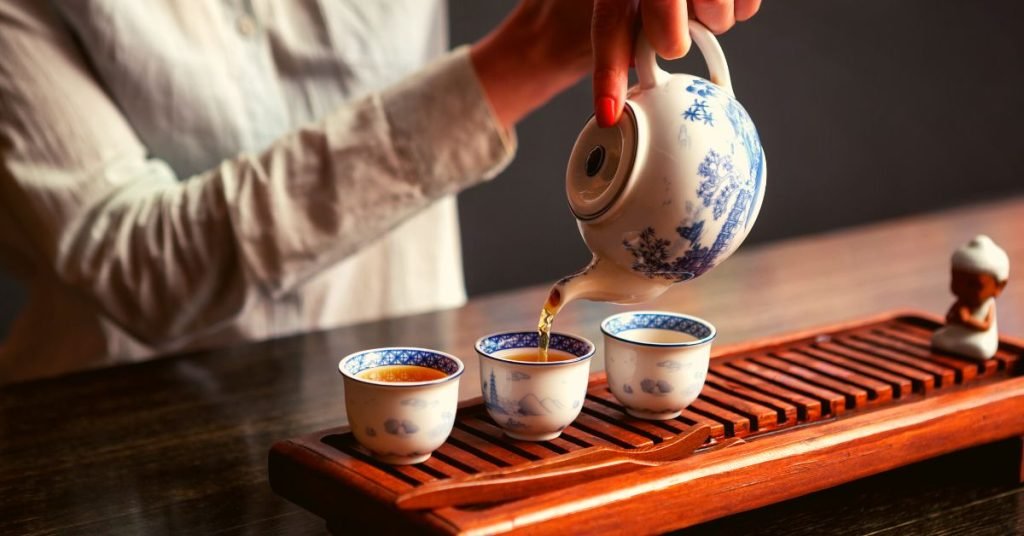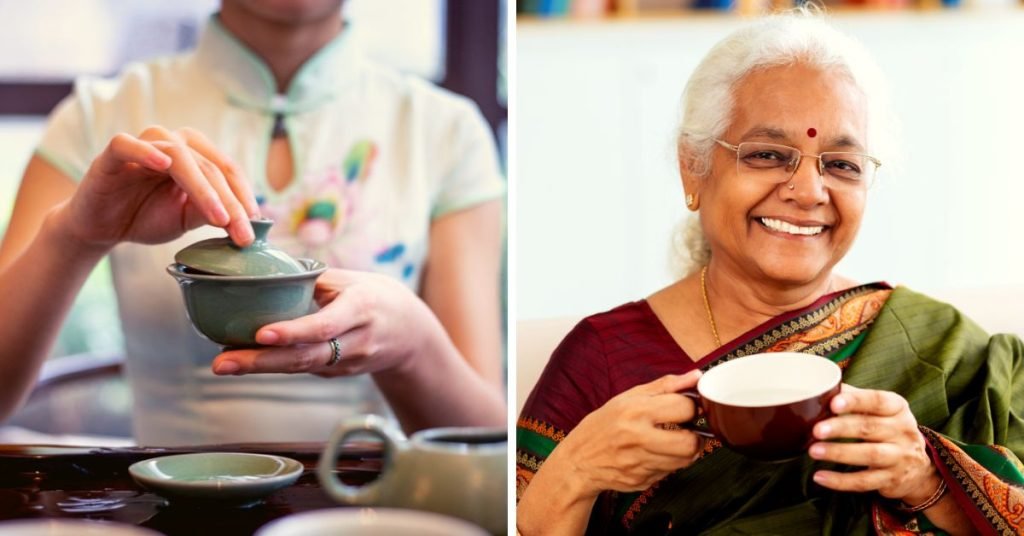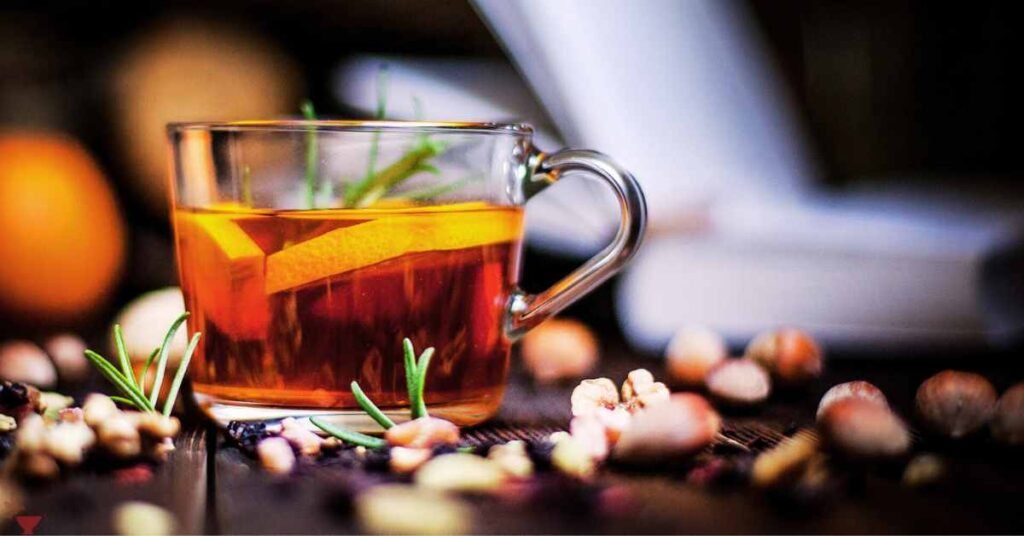Tea, a beverage steeped in history and culture, has long been a symbol of hospitality, ritual, and tradition.
As two of the world’s foremost tea-producing nations, China and India boast rich and distinct tea traditions that have captivated enthusiasts for centuries.
The differences between Chinese and Indian teas extend beyond mere geography; they reflect the unique terroirs, cultivation methods, and cultural influences that shape each nation’s tea production.
In this exploration, we’ll delve into the nuanced distinctions between the teas from these two tea powerhouses.
Terroir and Geography

The concept of terroir, a French term commonly associated with wine, refers to the environmental factors that influence the taste and characteristics of agricultural products.
In the realm of tea, the terroir plays a pivotal role in shaping the flavor profiles of Chinese and Indian teas.
China, with its vast and diverse landscape, encompasses several major tea-producing regions, each known for its unique terroir.
Chinese green teas, such as Longjing (Dragon Well) from Zhejiang province and Bi Luo Chun from Jiangsu province, showcase the influence of local soil, climate, and altitude.
The delicate, chestnut-like flavor of Longjing is attributed to the nutrient-rich soil around West Lake, while the mist-covered hills of Dong Ting contribute to the floral notes of Bi Luo Chun.
In contrast, the tea regions of India, such as Darjeeling, Assam, and Nilgiri, boast their own distinct terroirs.
Darjeeling, nestled in the Himalayan foothills, is renowned for its high-altitude gardens that yield teas with floral and muscatel notes.
Assam, with its low-lying plains, produces robust and malty black teas, while Nilgiri, in the southern part of the country, offers teas characterized by a brisk and lively profile.
Tea Varieties and Cultivars
Both China and India cultivate a wide array of tea varieties, each contributing to the diverse tapestry of flavors in their respective teas.
In China, the birthplace of tea, the spectrum of tea types is vast, encompassing green, black, white, oolong, and pu-erh teas.

Famous Chinese teas like Tie Guan Yin (Iron Goddess of Mercy) oolong from Fujian and Da Hong Pao (Big Red Robe) from Wuyi Mountain showcase the country’s expertise in crafting diverse and complex teas.
India, on the other hand, is primarily known for its black teas, with the Assam and Darjeeling regions leading the charge.
Assam teas, predominantly made from the Camellia sinensis var. assamica plant, are bold, robust, and often favored in breakfast blends.
Darjeeling teas, typically produced from the Camellia sinensis var. sinensis plant, are celebrated for their nuanced and delicate flavors, often compared to the “champagne of teas.”
Cultural Influences and Production Techniques
The cultural context surrounding tea production in China and India further contributes to the differences in their tea traditions.
Chinese tea culture, deeply rooted in ancient practices, emphasizes the art of tea preparation, with rituals such as gongfu cha (traditional Chinese tea ceremony) showcasing the meticulous brewing techniques associated with different tea types.
Chinese teas are often enjoyed in multiple infusions, allowing the drinker to savor the evolving flavors with each steep.
In India, the colonial history has left an indelible mark on the tea industry.
Introduced by the British in the 19th century, Indian tea production initially focused on meeting the demands of the British Empire.
This legacy continues in the large-scale production of robust black teas, well-suited for bold blends and a strong morning cuppa.

While traditional tea ceremonies are less prominent in India, the cultural significance of tea as a social beverage remains steadfast.
Unique Tea Processing Methods
The methods of processing tea leaves also contribute significantly to the differences between Chinese and Indian teas.
Chinese green teas, such as Dragon Well and Huangshan Maofeng, undergo minimal oxidation through pan-frying or steaming, preserving the leaves’ natural green color and delicate flavors.
Oolong teas, like Ti Kuan Yin, involve a partial oxidation process that results in a diverse range of flavors, from floral and fruity to toasty and creamy.
In India, the orthodox method of tea processing is widely employed, particularly in Darjeeling.
This traditional method involves plucking the tea leaves, withering them to reduce moisture, rolling to release enzymes, oxidizing to develop flavor, and finally, firing to halt the oxidation process.
This meticulous approach contributes to the nuanced and complex profiles of Darjeeling teas.
Final Word

In the vast world of tea, the distinctions between Chinese and Indian teas are not merely geographical but are deeply rooted in the terroir, cultural influences, and processing methods unique to each nation.
Chinese teas, with their diverse range of types and intricate processing techniques, offer a sensory journey that reflects the artistry of ancient tea traditions.
Meanwhile, Indian teas, predominantly black and shaped by colonial history, provide a bold and robust experience that has become a staple in many households worldwide.
Ultimately, the beauty of tea lies in its ability to transcend borders, connecting people through shared moments of contemplation and enjoyment.
Whether sipping a delicate Dragon Well in a traditional Chinese tea ceremony or relishing the boldness of an Assam breakfast blend, tea enthusiasts can appreciate the rich tapestry of flavors and cultures that both China and India bring to the world of tea
MEDICAL DISCLAIMER
Itsnevernotteatime.com cannot and does not contain medical/health advice. The medical/health information is provided for general and educational purposes only and is not a substitute for professional advice.




